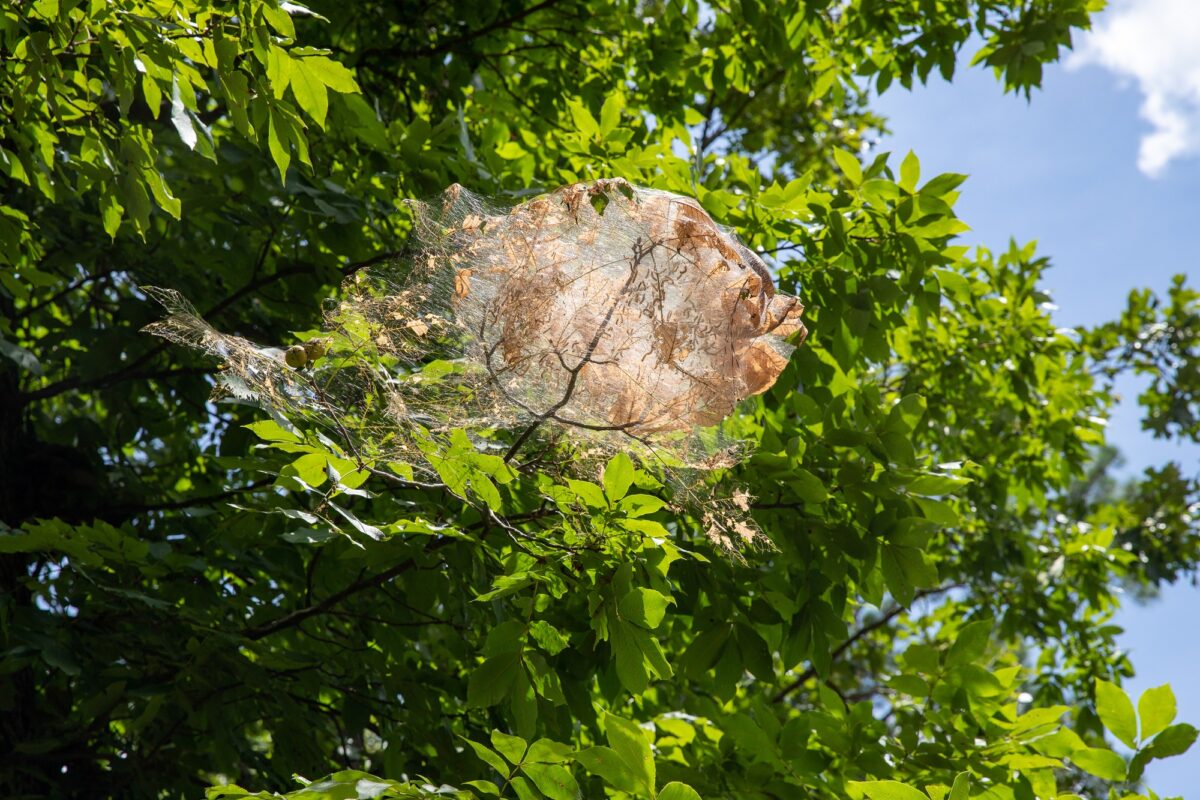Blog, What's Wrong With My Trees?
What’s wrong with my trees? Fall webworm
Fall webworms feed on hundreds of different tree species
Fall webworms are a common, native moth found throughout the United States that feeds on hundreds of tree species. These species include walnut, hickory, ash, maple, oak, poplar, and more.
Signs and symptoms of fall webworms
When it comes to damage to your trees, the caterpillars do most of the damage—not the adult moths. The most common signs of fall webworm include:
- Defoliation
- Silken web nests
- Early leaf drop
These nests can be up to three feet long and host thousands of immature caterpillars. They will leave the nest to find a protected location to overwinter when they mature.
Managing fall webworms
Managing fall webworms is primarily aesthetic, as damage is often not enough to seriously harm tree health defoliation can cause stress. Thankfully, fall webworms have many natural predators, so opening the nests with a sharp object like a spade or stick can allow those predators to feast on the caterpillars. This is an excellent organic control option. Never attempt to burn the nests!
Chemical controls are available and must be applied by a professional when the caterpillars are young. Contact your ISA Certified Arborist at Hansen’s Tree Service for a hassle-free estimate and tree inspection.
